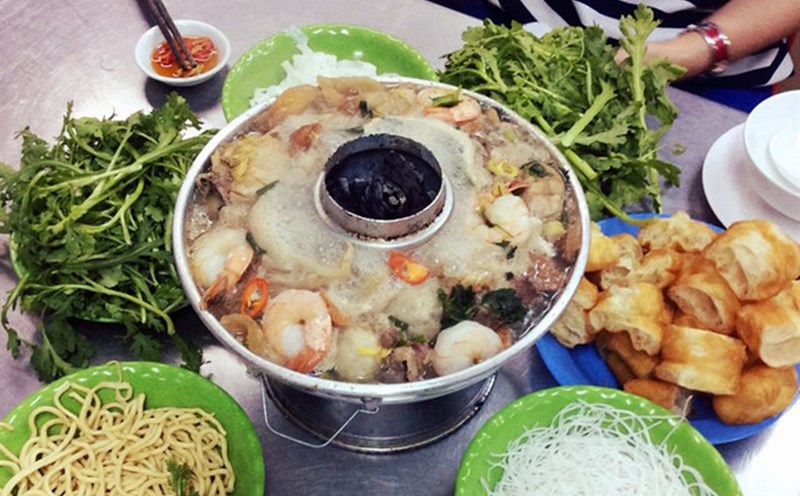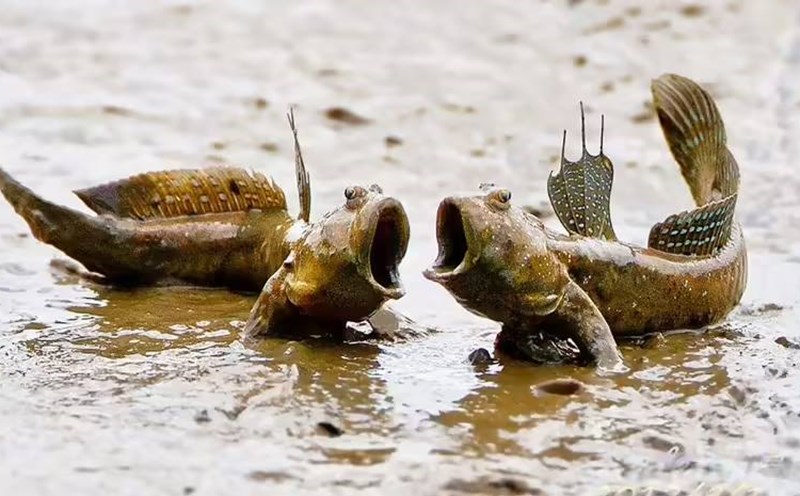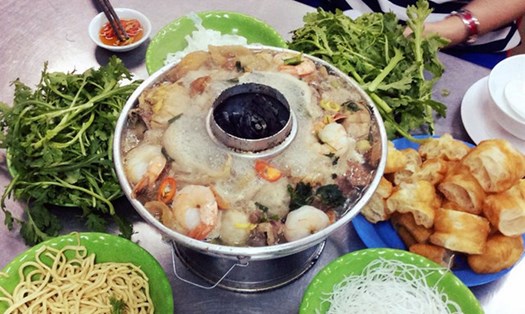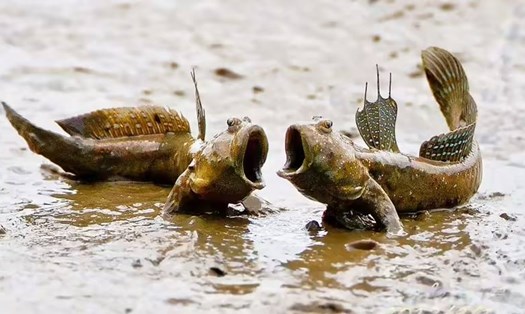Mudskippers are amphibians that can live both in water and on land. They live in estuaries, lower rivers and oceans in tropical climates.
In the West, on coastal mudflats, provinces such as Soc Trang, Bac Lieu, and Ca Mau are considered the capital of mudskippers. This type of fish dives very deep, often jumps on the water surface, and especially has the ability to climb trees.
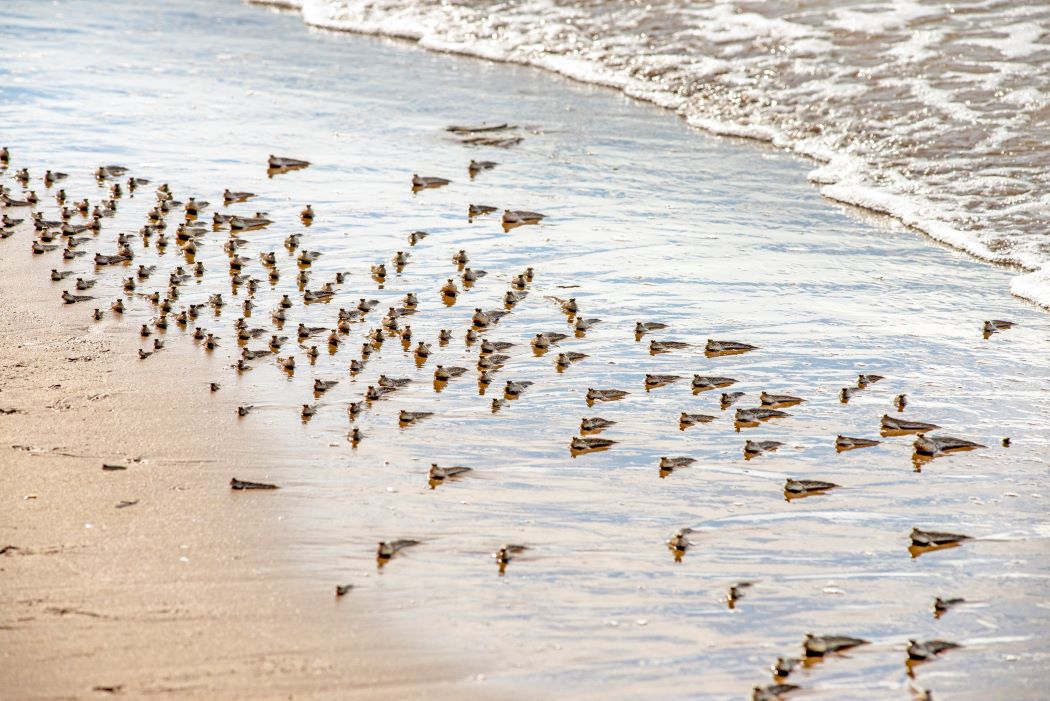
The fish is only the size of 1-2 fingertips. The skin is thick, rough and full of slime. The eyes are quite large, raised high on the head. The two upper fins are developed like the two front limbs, helping them run on mud very quickly.
When threatening enemies, they often open their mouths wide and their dorsal fins stand up, looking both fierce and strange. Mudskippers have been classified by the World Organism as one of the 6 strangest animals on the planet.

To catch this type of fish, people use cuttings (funnel-shaped pieces made of nipa palm leaves) and place them in the mouth of the cave. When crawling out of the cave, the fish crawls to the surface and falls into the cuttings. In addition, some places also dig burrows and fish to catch them.
Even though they live all year round in swampy areas, mudskippers are not fishy. Fish can be processed into many dishes such as braised in braised pork, braised with lemongrass and chili, sour soup , crispy fried... but grilled with salt and chili or grilled with fish is the best.
Wash the mudskipper fish, marinate it with salt and chili, use a fresh bamboo stick to skewer the fish lengthwise, then place it on the charcoal stove and stir evenly. When the fish is cooked, just use chopsticks to separate the outer yellow skin to reveal pure white fish meat inside.

This fish dish is especially delicious when dipped in chili salt or cork juice with raw vegetables to create a strange, unique and irresistibly delicious dish.
In recent years, many coastal localities have formed community tourism destinations, where visitors will have the opportunity to wade through mud to catch mudskippers, then prepare them into dishes themselves.
Restaurants and eateries also offer mudskipper dishes as signature dishes to attract diners.

